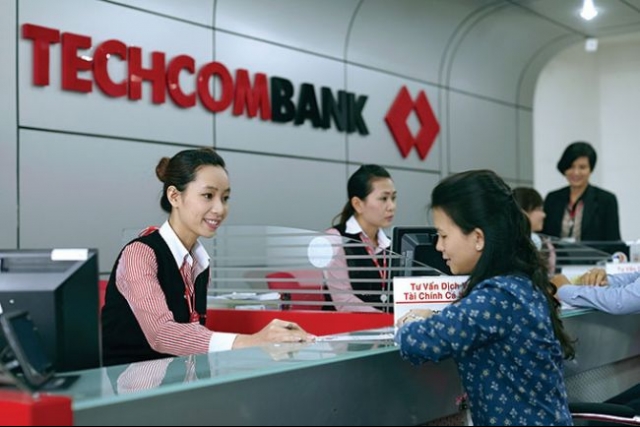Continuing this year’s trend of foreign banks retreating from local financial institutions, an announcement came on June 15 that one of Vietnam’s largest commercial lenders, Techcombank, was seeking shareholder approval to buy back a 19.41 per cent stake, equivalent to 172.32 million shares, that its long-term partner the Hongkong-headquartered HSBC has held for more than a decade.
Desirable partner

In 2007, the world’s third-largest bank, HSBC, struck a $71.5 million deal to double its holding in Vietnam’s third-largest private bank, taking its shareholding to 20 per cent after acquiring an initial 10 per cent in 2005 for $17.3 million.
Having enjoyed deposit and loan compound annual growth rates (CAGR) of 68.4 per cent and 57.9 per cent over the five-year period after HSBC’s stepped in, which far outpaced the sector average of 28 per cent in deposits and 28.9 per cent in credit growth, Techcombank boasted the highest average net interest margin (NIM) in the local banking sector during the 2005-2010 period, of 3.79 per cent, and was second only to Sacombank in terms of fees and commissions to total sales.
While local banks that find the right foreign partner have an inestimable advantage over their local rivals without having to sacrifice any real measure of operational control, a partnership that involves the steady transfer of product and process technology over several years presents the recipient bank with a real competitive edge.
Techcombank - Interest income vs. expense vs. NIM

2017 and 2016 first quarter profit break-down

Unlike the basic or even intermediate level of the strategic partnerships seen in the cases of Deutsche Bank and Habubank or Standard Chartered and ACB, the ties between HSBC and Techcombank advanced to a transfer of personnel on multi-year contracts to fill key posts in Techcombank’s treasury, wealth advisory, and credit departments, as part of a 2007 deal in which HSBC agreed to pay Techcombank $13.5 million over five years to provide assistance with technical services.
One may well argue that the two competed in different segments and so were not on a collision course, but any strategic partnership carries with it certain tensions when the long-term goals of each differs.
Organic growth
In fact, the scale-down of HSBC’s active role in Techcombank has been gradually initiated since 2012, when the latter didn’t escape the troubles besetting the local banking sector.
With 7.3 per cent credit growth while provision expenses jumped 324.4 per cent year-on-year and accounted for 59 per cent of pre-provisioning profits, Techcombank’s pre-tax profit fell by more than three-quarters from a high of VND4.22 trillion ($185.7 million) in 2011 to just over VND1 trillion ($44 million) in 2012. Both return on assets and equity also slipped, from 1.83 per cent and 28.87 per cent a year earlier to a disappointing 0.42 per cent and 5.58 per cent by the end of 2012.
After writing off a total of 17.73 per cent of its 2012 loan book over the last five years compared to the sector average of 4.18 per cent, the bank successfully restructured its balance sheet thanks to the adoption of prudent policies.
Its 2016, net profit climbed 105.92 per cent year-on-year, supported by loans growth, a higher NIM, and solid non-interest income.
The momentum then spilled over into 2017’s first quarter, with the bank recording 127 per cent year-on-year growth in pre-tax profit, to VND1.32 trillion ($58 million), primarily thanks to gains in investment securities and lower provision expenses.
Having just returned to normal operations, since the end of last year Techcombank has been eager to seek a more dedicated and less-conflicted strategic partner.
Then, in mid-June, the announcement came that the bank was seeking shareholder approval for HSBC to sell its entire stake of 172.32 million shares. Techcombank officials declined to comment when asked by VET.
HSBC Vietnam also refused to elaborate in more detail when asked. Bluntly put, having a minority stake didn’t offer it much of a say in Techcombank’s decision-making over recent years, one person with direct knowledge of the situation told VET, adding that HSBC has long pursued an “organic growth” strategy not only in Vietnam but the rest of Asia-Pacific.
To some extent, this can either be understood as “we [HSBC] are fine with the break-up because the strategic partnership has never been more than just an initial platform” or “there will be little or no impact on HSBC’s vision in Vietnam post-parting.”
Absolute decision-making power
In bidding a final farewell to HSBC via the treasury buyback, every strategic move that Techcombank had planned is now on hold unless there is a buy-in from another strategic partner or financial investor.
While there might be no shortage of potential buyers given the quality of Techcombank and especially the now ample FOL for foreign investors after HSBC’s exit, what’s troubling is the absolute decision-making power of the Masan Group in its associate company.
Having cut more than half of its stake in Techcombank to the current 15 per cent to meet the limits on owning no more than 20 per cent of charter capital in a credit institution, the “quasi-private” conglomerate still owns a 30.4 per cent interest in the bank through bond acquisitions in 2010.
With Techcombank now turning a corner, the share of profit for Masan from Techcombank rose 96.4 per cent year-on-year to VND970 billion ($42.7 million) in 2016 from VND499 billion ($22 million) a year earlier.
As the Board and its related parties hold a total stake of 5.82 per cent, senior leadership roles at Techcombank are still in the hands of Masan personnel, including Chairman Mr. Ho Hung Quang, First Vice Chairman Mr. Nguyen Dang Quang, and Vice Chairman Mr. Nguyen Thieu Quang.
VN Economic Times